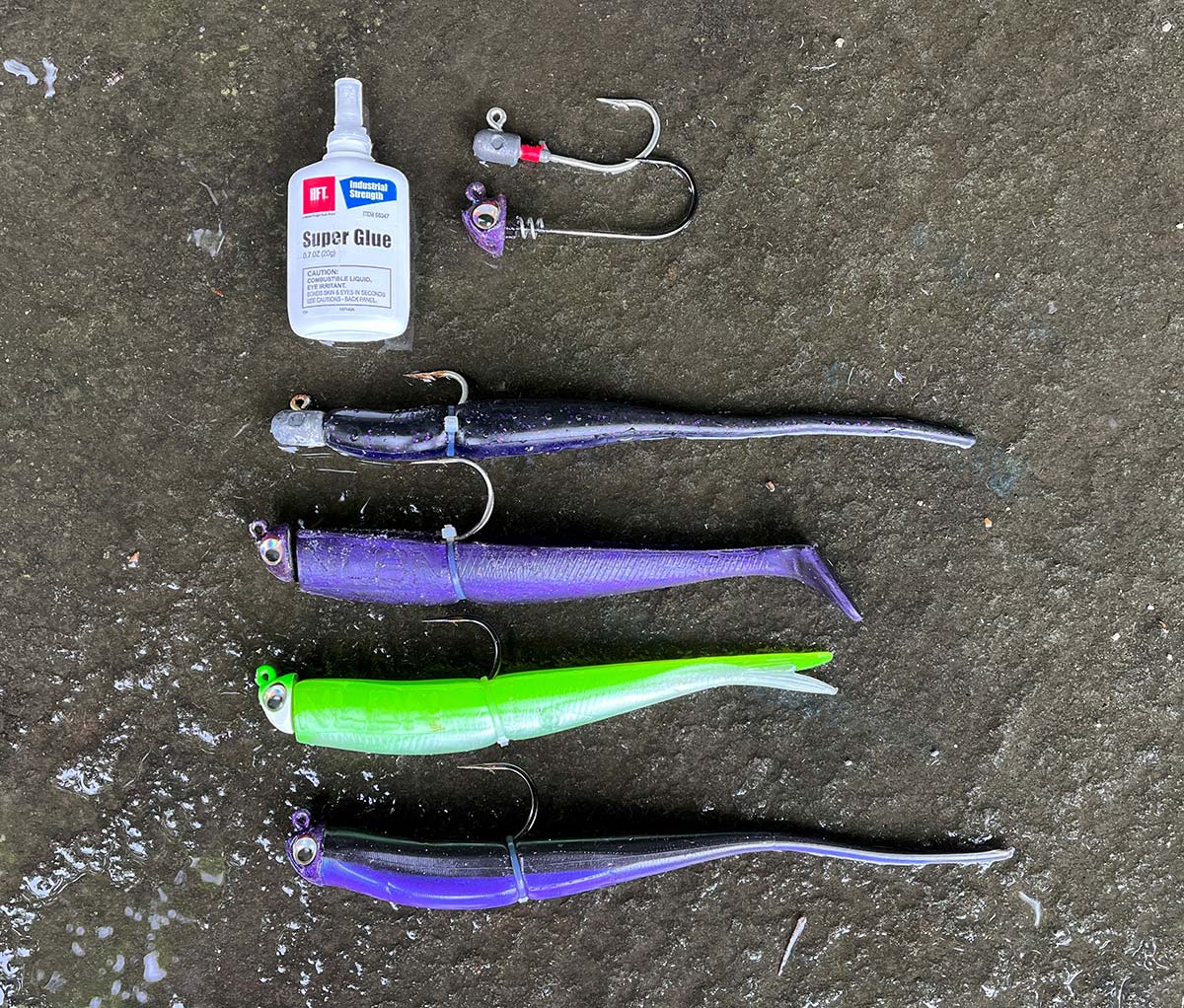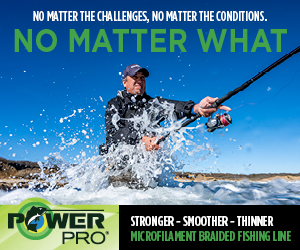
Methods for prolonging the life of your soft plastics.
I foolishly resisted using soft plastics in the surf for many years – the only exception being the swim shad. I guess I thought of myself a plug purist. As time wore on, more and more anglers that I respected were singing the praises of soft plastics threaded onto leadheads and my resolve began to crumble. Then, one night, I was standing on a rock, catching fish in a place I consider to be a secret. Lights flicked on across the cove and I found myself afraid to cast my darter into the quickening tide. I thought through what was packed in my bag and remembered there were a few Super Snax on half-ounce heads in there, I swapped out the plug for the plastic and crushed fish undetected for the next 90 minutes – a believer was born.
That year I went from rarely carrying plastics to looking like I had several octopi stuffed into my surf bag, their tentacles flailing all over the place each time I peeled back the flap. They worked, they produced big fish and they earned thunderous strikes from fish of all sizes; just plain fun to fish! My only complaint was that they just didn’t last long enough!
Threaded Lead
Super Glue has long been part of the plastic-slingers toolkit and it does make a difference, but there are ways to make it work even better. First off, you need to buy the right kind and if you ask me, the right kind is the thin version, the stuff that pours like water. Yes, you do have to be careful with it because it’s runny and if you over-apply, you’re likely to glue your fingers to the bait (or each other), but the thin stuff dries way faster on lead and plastic and will flow deeper into crevices, making for a more complete bond. I take it a step further, and wrap 10 to 15 coils of heavy rod-wrapping thread around the collar of the leadhead and, after threading the bait onto the hook—and just before plunging that collar into the bait – I soak the thread with super glue. The thread holds the glue and bonds that lead and plastic like mother and child. This works on just about any leadhead on the market and will work with tiny baits as well as massive plastics exceeding a foot in length.
Zip-Tied
As far as I know, my friend and former fishing partner Dave Daluz pioneered this method, I believe I first saw him using this in 2013 to preserve the life of his 9-inch Tsunami Swim Shads. The logic comes from eel rigging, where one of the last steps is to sew a loop right at the bend of each hook and tie it super-tight over the back of the eel. In this case a zip-tie is cinched tightly around the bait, just forward of where the hook exits the plastic. This stops the deep tears that sometimes occur when a fish grabs the rear half of the bait and pulls it down. It also limits the damage when a large fish engulfs the whole thing and the bait is folded against the roof of the fish’s mouth or jaw during a long battle. Basically, the zip-tie takes the brunt of the abuse. Zip-ties can also be used to ‘strangle’ a bait around the collar of the jighead if you didn’t glue it or have to re-rig in the field. I keep a small bag of zip-ties in my surfbag at all times.
The NLBN Innovation
The best jighead on the market is made by No Live Bait Needed (NLBN). These heads are customized to fit their line of sturdy and effective plastics. I love their baits – both the paddletail and the straight tail, but when the fish want something with a different profile or action, I am not shy about using their jigheads with baits they weren’t designed to fit. These baits feature an integrated corkscrew that is fitted around the shank of the hook. The first time you see one, you might get a bit of headache trying to figure out how to rig it, but when you see the light it all becomes crystal clear. Basically, you measure the bait against the hook and mark your exit point, rig the bait as you normally would and – when you arrive at the point where you’d usually apply glue and sink the collar into the plastic, you rotate the bait around the shank – bending the bait so that it clears the hook – until it’s snugged up against the head. You may find that the barb of the hook slashes the bait with each rotation, my trick for this is to slide a section of plastic tubing over the point and barb before screwing the bait onto the hook. This ‘no glue’ rigging method is pure genius and it’s unbelievably durable, add the aforementioned zip-tie and that plastic bait will catch huge numbers of fish without replacement.




